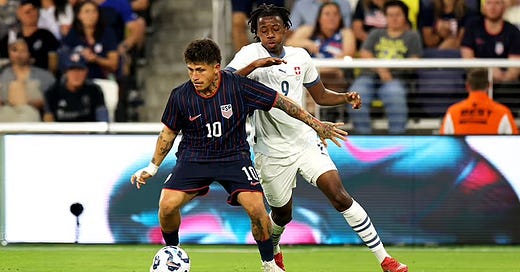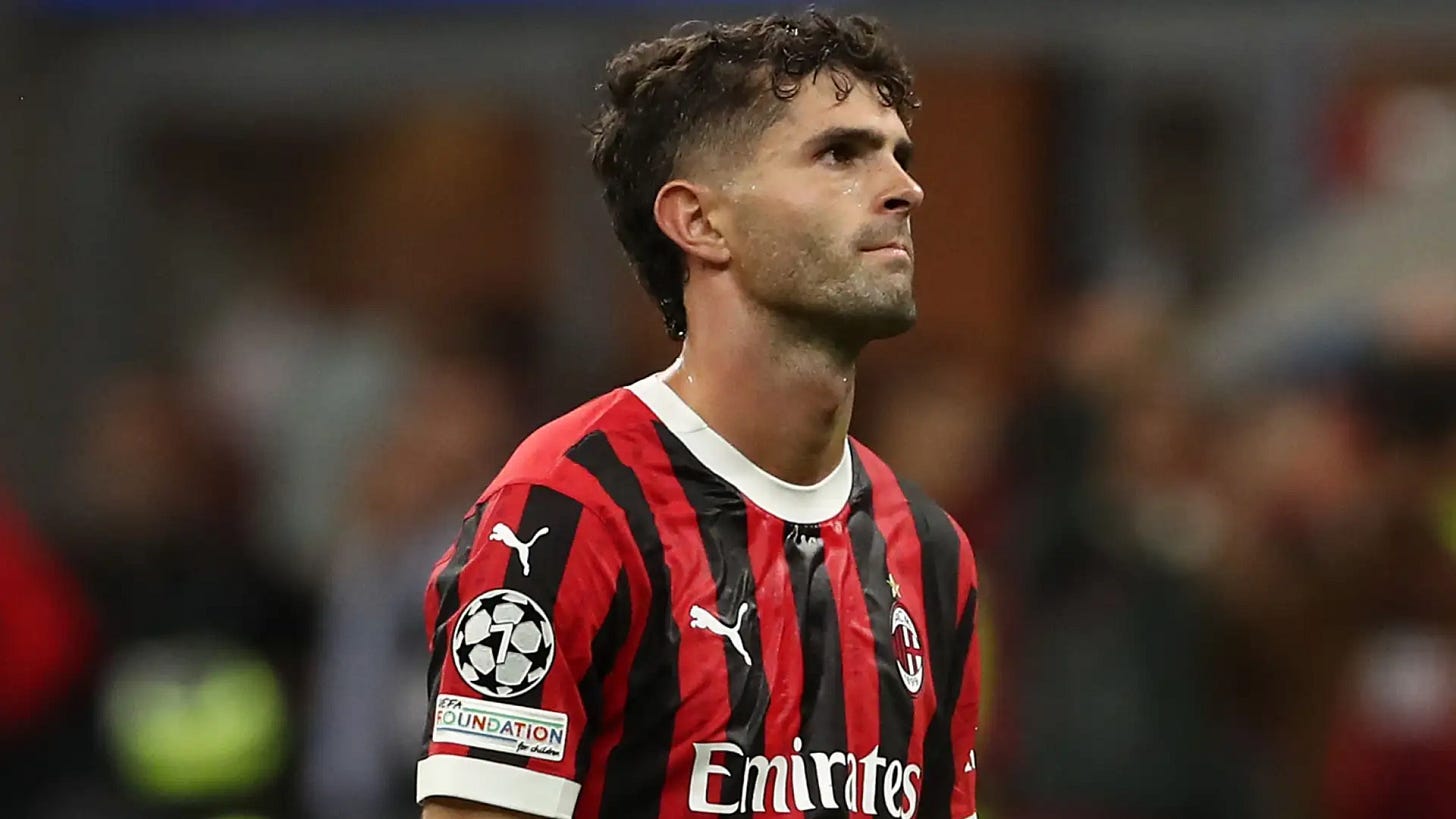A disastrous USMNT window sets a harsh tone
Following the worst first half performance in 40 years, what is the point of the USMNT?
The US Men’s National Team is on a fact finding mission. While players like Christian Pulisic are taking the Gold Cup as a time to recover following lengthy club seasons, the US needs to expand its player pool to keep up.
First off, the calculus is simple for Pulisic. He’s played over 100 games since arriving at AC Milan ahead of the ‘23/‘24 season, and is looking down the barrel of another chaotic club situation ahead of next summer’s World Cup.
However, the conversation around Pulisic’s absence has taken a wild turn with USMNT alumni—such as Landon Donovan—criticizing the timing of the break ahead while current USMNTers—and Pulisic’s father—returned fire at Donovan and his generation.
… it’s been a mess.
Pulisic hasn’t been perfect in his handling of the criticism but the focus should be on his health heading into a crucial World Cup year as opposed to playing through lingering issues with no time to recover ahead of another long European season. Pulisic posing on a golf course the day his USMNT teammates face tough competition without him is a separate issue; but the main criticism — he shouldn’t miss national team matches — is born from a time when top players worldwide were playing far fewer matches both domestically and internationally.
“We don't step out there and not give 100%... it's not something that we do." Pulisic responded via a CBS Sports interview Thursday afternoon. “Growing up, some of these guys were my idols and I respect them so much as players... privately, the way they talk to me and clearly want to show support and be your friend and everything, and then they go and say something slightly different publicly.”
Off the pitch in-fighting is one thing, but what has transpired on the pitch and sheer the lack of execution—even in the face of a completely over matched roster vs Switzerland—does speak to some of the points Donovan thought he was making.
Clint Dempsey’s “right message, wrong messenger” comment couldn’t be more apt.
There does seem to be a lack of inherent meaning when players throw on the USMNT badge. It stands out when a player like Diego Luna can make a large impact in a 0-4 match simply because his workrate stood out compared to the first half performance. It’s not an inherent criticism of the players on the pitch but it shows an inability for players in the starting XI to be able to raise up to the standards of top flight international competition.
That can change, and young players will either sink or swim in the aftermath of these moments but it’s worth asking why they seemed so ill prepared for how Tükiye and Switzerland were planning on attacking.
The first half performance was the worst of any USMNT squad since 1980, the 4-0 loss was the worst at home since 2016’s Copa America loss to Argentina, and two losses this window marked the first time since 1988 that the program has lost four straight on US soil.
It hasn’t been good.
Pochettino deserves some blame. Yes, the roster shouldn’t be expected to be able to go toe to toe with the likes of Switzerland, but it’s a roster that could have been better if Pochettino was more willing to expand the player pool past simply graduating players from the USYNT ranks.
There’s an easy comparison to make following a window where Emma Hayes gave Lo’eau LaBonta a long-earned invitation to the national team. Pochettino hasn’t ventured outside of expectations in such a way. USMNT eligible players like Andrew Gutman don’t seem to have a pathway into the national team.
However, in the absence of most of the most impactful players in the player pool, what was the expectation?
In a way, it seems counterproductive to revisit the “why” behind the loss. A roster that featured Nathan Harriel on both sides of the formation in his first senior team minutes, asked players to quickly adapt against greater competition.
The players largely failed, only Diego Luna and Patrick Agyemang finished the window with any sort of buzz.
So, what was the point?
Pochettino has to continue the work of his predecessors in expanding the US player pool. While some of those decisions have been quest, there is no doubt that the international experience for players like Harriel and Arfsten should benefit them ahead of the Gold Cup.
That mission isn’t inherently undone by Switzerland smacking them around, but it does hurt the excitement ahead of the Gold Cup. A Gold Cup that is continuing to squeeze American soccer fans with high ticket prices.
However, is that Pochettino’s responsibility? Or is it simply his job to assemble the roster he thinks will suit him against the best that CONCACAF (and Saudi Arabia…) has to offer.
Pochettino has learned that Diego Luna is invaluable, he has learned that Johnny Cardoso can’t play the role he is looking for in the double pivot — Cardoso only won one of five duels while failing to create any scoring opportunities.
Will that knowledge benefit him at the Gold cup? Only time will tell.
Hot takes prevail in the aftermath of four straight losses and while fans demand better, Pochettino isn’t going anywhere before the World Cup and US Soccer will just have to hope that the collective performance can live up to the moment.
It’s not looking promising — on or off the pitch — but this isn’t club soccer and USMNT are solely reliant on the health of its player pool. If that means sacrificing the Gold Cup for a better World Cup performance then fans will take that trade off.
In the meantime though, there will be criticism especially when high prices, off the pitch drama, and stadium security fiascos further cloud the national team picture.
It’s too soon to call the Pochettino era a failure, but if they fail to improve on the Copa América disaster, books will be written on an all-time wasted opportunity.






